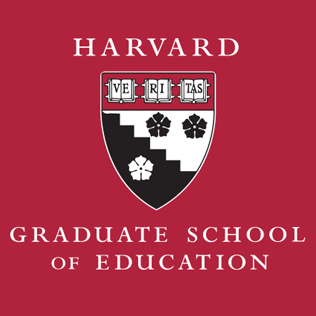Program Names: Adolescent Development Program (ADP) in Bangladesh and Empowerment and Livelihood of Adolescents (ELA) Program outside of Bangladesh
Website
brac.net/search/item/723-empowerment-and-livelihood-for-adolescents
Countr(ies)
Started in Bangladesh as the Adolescent Development Program, but has since expanded to Uganda, Tanzania, Sierra Leone, South Sudan and Liberia as the Empowerment Livelihood of Adolescents Program
Grade Level of Students Participating
No set grade level. The age range is 10-19, and the participants (mostly female) can be both in school and out of school, with the majority being out of school.
Number of Students Participating per Year
300,000 estimated in Bangladesh.
93,000 estimated for the 5 African countries.
Year Organization Began
The Adolescent Development Program (ADP) started in 1993 in Bangladesh.
Empowerment and Livelihood of Adolescents (ELA) Program started outside of Bangladesh in 2008 in Uganda and grew out as a combination of several ADP interventions done in Bangladesh with other interventions added according to the country context.
Relationship to the public education system
Works either within or external to the public education system, depending on context.
ADP in Bangladesh works with secondary schools, in Alia Madrasas, and with out-of-school children (ex: child workers)
ELA in Africa works independently from the public education system, but works closely with the national ministries of youth and gender.
Organization’s Vision and Mission
BRAC’s Vision: A world free from all forms of exploitation and discrimination where everyone has the opportunity to realize his or her potential.
BRAC’s Mission: To empower people and communities in situations of poverty, illiteracy, disease and social injustice. Our interventions aim to achieve large scale, positive changes through economic and social programs that enable men and women to realize their potential.
Brief Description of Program Activities
The Adolescent Development Program (ADP) in Bangladesh is an educational program in life skills based education and financial literacy delivered in a safe spaces (where girls are not in physical danger from males).
The program includes 45 lessons of content (1 hour per session) and employs role-playing, small group work, discussions and brainstorming sessions to promote skills at financial empowerment, children’s rights and sexual reproductive health.
Since many of the program participants are at risk for early marriage or single motherhood, the program, in addition to life skills and health education, focuses on promoting skills necessary for earning money and supporting a family, as well as savings habits so that they can be in better control of their lives. Livelihood training courses for employability skills are also offered to girls to empower them financially.
Empowerment and Livelihood for Adolescents (ELA) is a program that seeks to offer hundreds of thousands of adolescent girls the opportunity for a better life through livelihoods, mentorship, life skills training and microfinance. It targets girls from disadvantaged backgrounds in Bangladesh, Uganda, Tanzania, Sierra Leone, South Sudan and Liberia.
Both programs start with “safe spaces” close to the home, where teens can discuss problems with their peers in small groups and build their social networks, away from the pressures of family and male-centered communities. Health education, confidence building and other life skills are added to the mix.
Finally, as one of the world’s earlier and largest providers of microfinance, BRAC has added a financial component. For younger girls, the emphasis is on social skills development and creating a savings mentality, but by their mid-teens – the exact age differs from context to context – there is a demand among adolescent girls for livelihood training, financial literacy and sometimes microloans.
Program Content: Intrapersonal Competencies
Self-confidence, entrepreneurial mindset, self-worth, personal autonomy to take care of themselves
Program Content: Interpersonal Competencies
Giving girls the confidence they need to assert themselves and resolve conflicts.
Leadership, negotiation, communication, empathy, effective communication
Program Content: Cognitive Competencies
How to learn, earn and save – along with livelihood skills training, business planning, training in entrepreneurship, budget management, savings.
Creativity, decision-making, numeracy skills, awareness of rights.
Program Content: Attitudes and Values
Learn the importance of staying in school and avoiding early marriage and pregnancy. Entrepreneurial mindset. Taking control of their lives.
Program Content: Pedagogy/ Active Engagement of Students
Discussion, role-playing, brainstorming, socializing with other members.
BRAC launched its first adolescent development program in 1993, which included Kishori Kendros (“Girls’ Clubs”), under ADP, which were safe spaces where adolescents aged 10 to 19 could read, socialize, play games, sing, dance and exchange views and experiences – all activities that were often frowned upon in their homes. Groups generally meet twice a week. One day is for socializing, reading books and fun activities. The second day is dedicated to the learning curriculum led by a trained mentor.
Additional Notes
Adolescent group leaders (mentors) who lead the adolescent clubs are given 5 days of basic training on life skills and 2 days of financial literacy training at residential training centers. There are currently over 9,000 adolescent clubs (25-40 members each) running in Bangladesh.
It’s important to highlight that a major step towards girls' empowerment is community support. Community elders attend club-opening ceremonies, and the wider community continues to be involved through mothers’ forums and other meetings.
Source of Information
All information for this summary come from BRAC’s website and a phone interview with the Program Managers for both ADP and ELA that took place in June 2016.
Prepared by
Ashim Shanker


